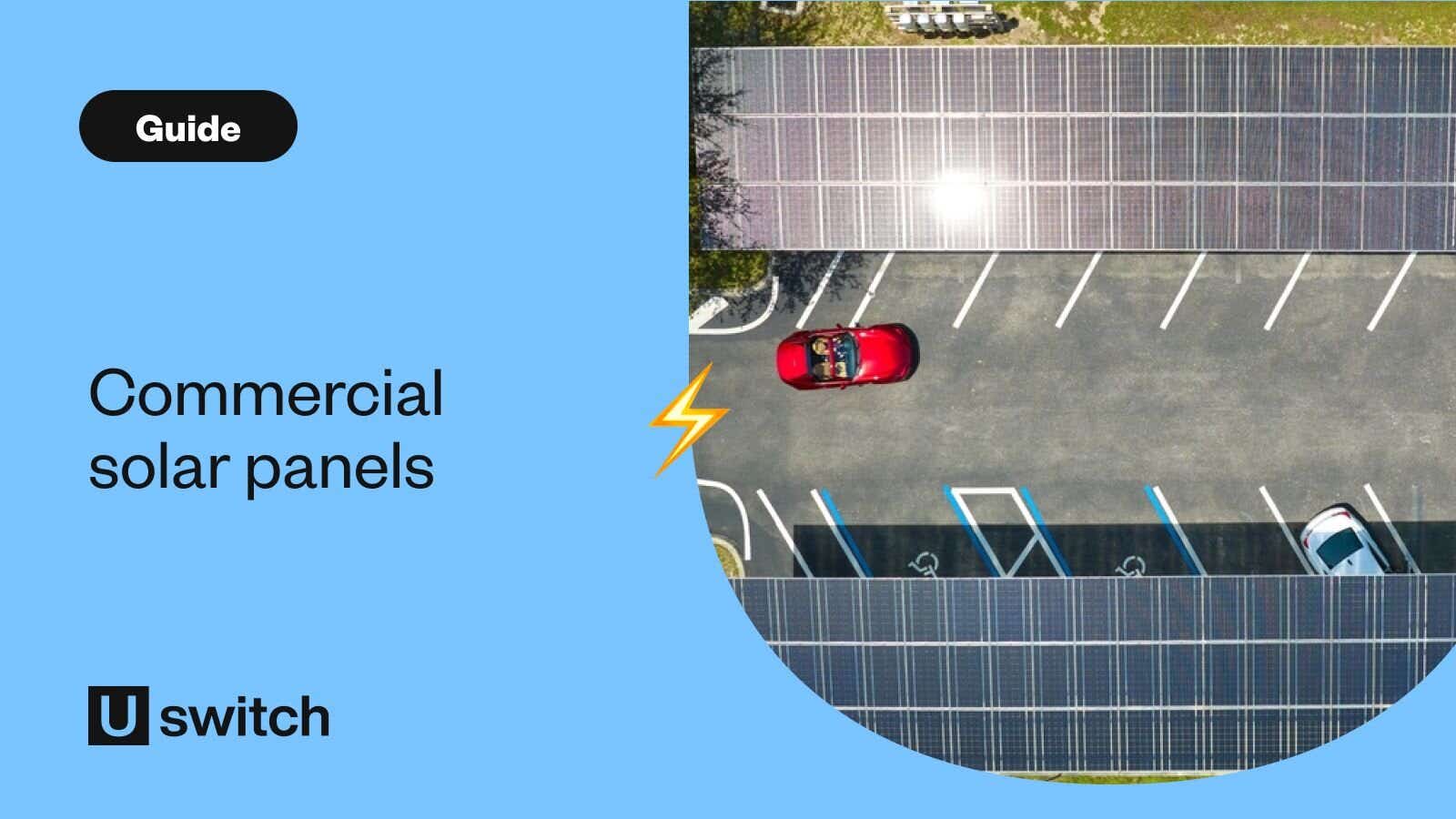Commercial solar panels


What are the benefits of investing in solar panels?
Reducing energy costs
Investing in UK commercial solar panels is a good way to lower your business energy costs. Solar panels for businesses deliver electricity at around 4-5p per day versus a normal grid price of around 20-25p.
Ensuring energy security
If you have a solar energy system working with a storage battery, you can make sure you have reserves of energy to call on if there's a power cut. You can also switch between stored energy and the grid depending on the cost of electricity at any one time.
Earning money by selling excess energy
What’s more, businesses that generate their own commercial solar energy can sell the energy they don’t use back to the national grid. To be eligible to sell back to your provider, you’ll need to have negotiated a Feed-in Tariff. Put simply, a Feed-in Tariff is a government subsidy for businesses that produce excess renewable energy, allowing them to earn what they give back.
Unfortunately, the FIT scheme closed for new applications on March 31, 2019, but you may still be eligible for payments. For more information, check out our business energy Feed-in Tariffs page.
Investing in commercial solar energy is not all about cost. By choosing solar panels for your business premises, you will reduce your environmental footprint and promote sustainability, all the while attracting customers with environmental concerns.
What is the average commercial solar panel cost?
Commercial solar panel costs average in between £3,000 and £10,000. That’s because there are two types of systems you can choose. The cheapest, between £3,000 and £5,000 is solar thermal energy, whereas small-scale photovoltaic (PV) systems cost up to £10,000.
- Solar thermal energy use sunlight to heat water stored in your hot water tank. They are attached to the side of your building and produce steam to generate electricity
- Solar PV panels are the panels you’ll have seen on roofs and the sides of buildings. They convert sunlight into electricity by creating an electric field between the cells which make up the panel.
The more you pay, the more efficiently your commercial solar PV system will generate electricity. So, it’s often worth spending a little more, especially if you plan on using a Feed-in Tariff to sell energy back to the national grid.
The initial cost may seem a little expensive on first sight, but the long-term savings are more than worth it – especially if you own your business premises or have a long lease. With solar thermal energy systems, it’ll take five years to earn back what you have spent. For small-scale PV systems, you can expect to have earned back your outlay between five and 10 years.
By investing in commercial solar energy panels, you can avoid any future increases in the cost for electricity.
Are any grants available for investing in commercial solar panels?
There are plenty of government initiatives, alongside Feed-in Tariffs, which can help you invest. These include:
- The Green Deal enables you to pay for the installation costs of energy-saving technologies via savings on your energy bills
- Enhanced Capital Allowances allow you to offset the cost of your equipment against your taxable profit
- Lease Purchase Agreements allow you to rent your renewable energy equipment and pay for it using income earned from subsidies. Once the cost is paid, you own the system
Other funding options include business loans, power purchase agreements, client funding and more.
Are any other renewable energy options available?
There are many options for business renewable energy. Most enable you to access similar government subsidies and tax breaks to commercial solar panels.
- Wind power – if you have enough building-free space, you can generate electricity through a wind turbine.
- Biomass systems – these systems burn organic materials like straw or wood pellets to generate electricity and heat.
- Anaerobic digestion – organic materials like plant and animal waste contain methane. Anaerobic digestion separates the methane, allowing it to be burned and turned to heat and electricity.
- Geothermal and ground source heat pumps – taking heat naturally contained in the ground, these pumps are attached to the side of your building and provide both heating and cooling.
- Combined heat and power – a CHP system captures the heat produced by electricity heating your water, allowing it to be used elsewhere.
- Hydroelectric power – this type of renewable energy uses the flow of water to generate movement and therefore electricity. They’re only available for sites with a water source and enough land for the technology.
How Uswitch business energy comparison works
Your comparison is free.
If you decide to switch, we’ll be paid a commission by the new supplier that is included in the prices we quote.
We find your details
Just enter your business address and we'll use industry data to accurately find and understand your energy usage.
We talk through your quotes
One of our UK-based experts will search our supplier panel and give you a call to talk you through the results on screen.
You choose the deal you want
With all the information to hand, you choose the deal that best suits your business and we'll handle the switch for you.

Compare UK business energy suppliers with Uswitchforbusiness
Compare prices from trusted UK business energy suppliers and get your next business energy deal in minutes.
By clicking ‘Compare business tariffs', you agree for us to search your current energy supplier and usage through industry-held data.